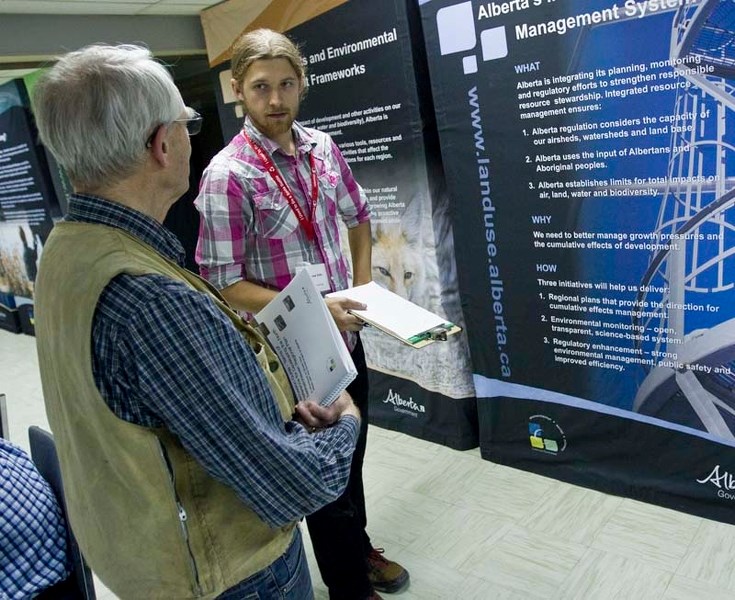Alberta's North Saskatchewan regional plan needs to do more to protect this region's land, air and water, say local commentators.
About 45 people came to the St. Albert community hall Wednesday for a workshop and open house on the province's proposed North Saskatchewan Regional Plan – one of 21 such open houses being held this summer.
The plan, once complete, will set out rules on how lands in the North Saskatchewan watershed (which includes St. Albert and Sturgeon County) are to be used for the next 50-some years and set limits on air, land and water pollution.
It's meant to set out strategic goals for the region's development, said Dave Bartesko, director of consultations for the Alberta Land Use Secretariat.
Details of the plan are pretty vague at this point, as these are early days in the process.
"We are looking at potential areas to conserve," Bartesko said, adding that the province wanted residents to step forward with suggestions.
The plan will likely include a toolbox of options governments can use to encourage land preservation, such as land trusts or transferable development credits.
Other departments are now working on frameworks for air, land, water and biodiversity conditions for the watershed that will slot into this regional plan, Bartesko said.
These frameworks will set thresholds for environmental degradation that trigger certain actions when passed. If companies in the Alberta Industrial Heartland are polluting the air too much, for example, these frameworks might require them to shut down or install more scrubbers.
Locals weigh in
About 30 industry, municipal and non-governmental representatives took part in a five-hour workshop on the plan early Wednesday at the St. Albert community hall.
Local farmer Bill Bocock said his top concerns in the plan are air pollution and the loss of agricultural land.
"Land use is fundamental to a sustainable society," he said, and our land is not being used sustainably today.
Albertans are threatening their food security by paving over good local agricultural land, Bocock said. He hopes the finished plan will include measurable goals and limits for air quality and land use.
Big Lake Environment Support Society member Pat Collins hopes the plan will have enhanced guidelines about water use.
"On the enforcement end of things, it's been somewhat lax."
He also noted that the current draft plan appears to emphasize economic development over environmental conservation, as it always discusses the former before the latter.
"The two have to go hand in hand," he said. He suggests that the province turn this emphasis around in the plan so that developers consider the costs of repairing environmental damage before they go out and do it.
Carolyn Campbell of the Alberta Wilderness Association hopes the plan will protect more land in the headwaters of the North Saskatchewan River – specifically in the Bighorn region near Banff and Jasper.
Forestry, mining and off-highway vehicles in the Bighorn region are all degrading the wetlands and river corridors that help prevent floods and droughts in this watershed, she continued. She hopes the province will turn the region into a public park under this plan.
"Formal public protection would really secure it for future generations."
The North Saskatchewan River valley is an excellent place for low-impact recreation and could also use more protection, she continued.
Advice from this round of talks will be forwarded to the plan's regional advisory council, which has yet to be selected, Bartesko said. Expect a second round of open houses this fall once the council writes up its proposals for the plan.
This plan is an important chance to manage cumulative environmental effects in Alberta, Campbell said.
"We need healthy lands, water and air to support prosperity, and right now we're past (healthy) limits," she said.
Details on the plan, as well as an online workbook, are available at landuse.alberta.ca/Newsroom/Pages/PublicConsultations.aspx.




